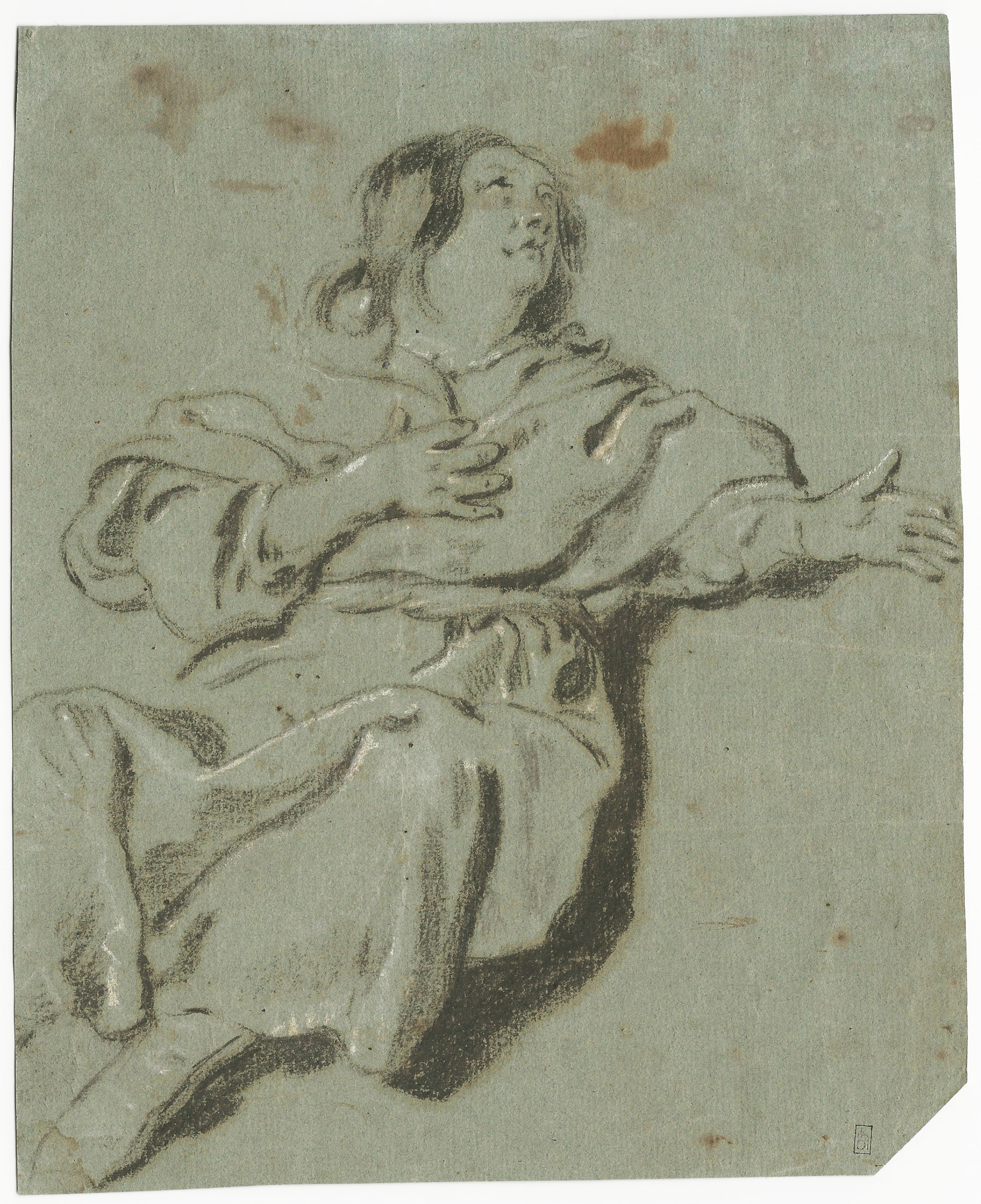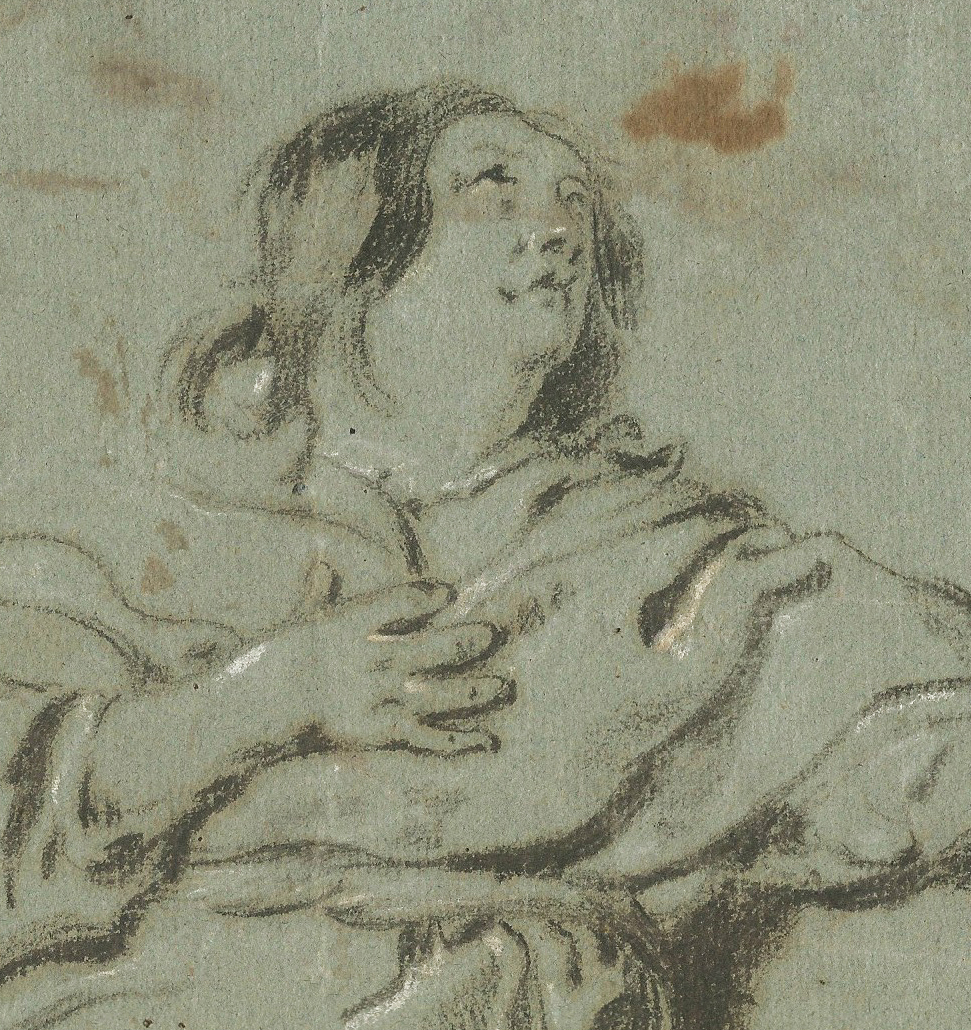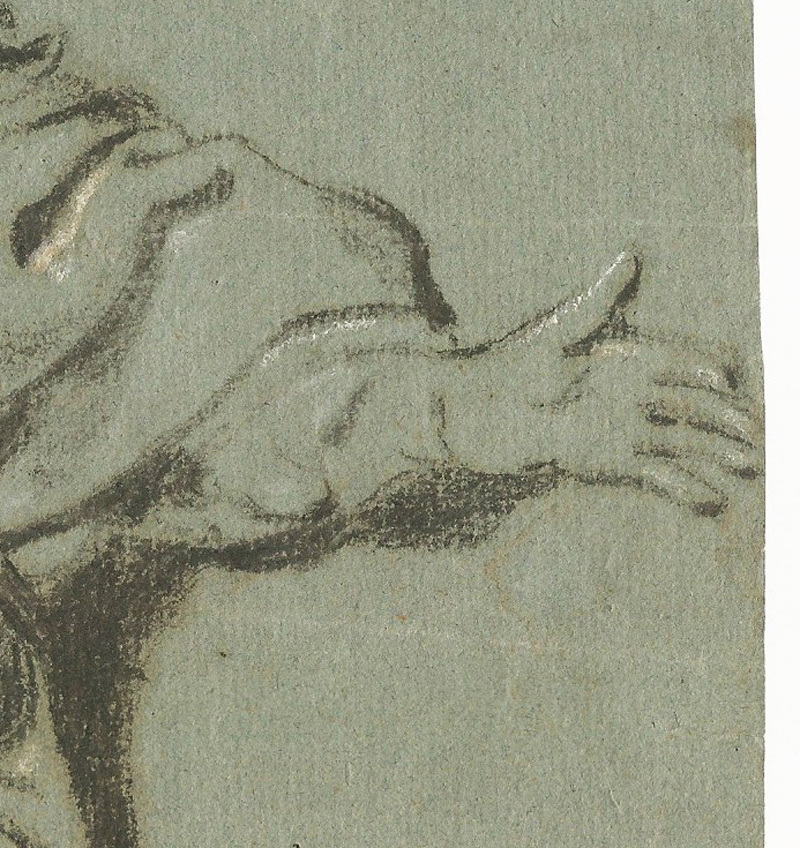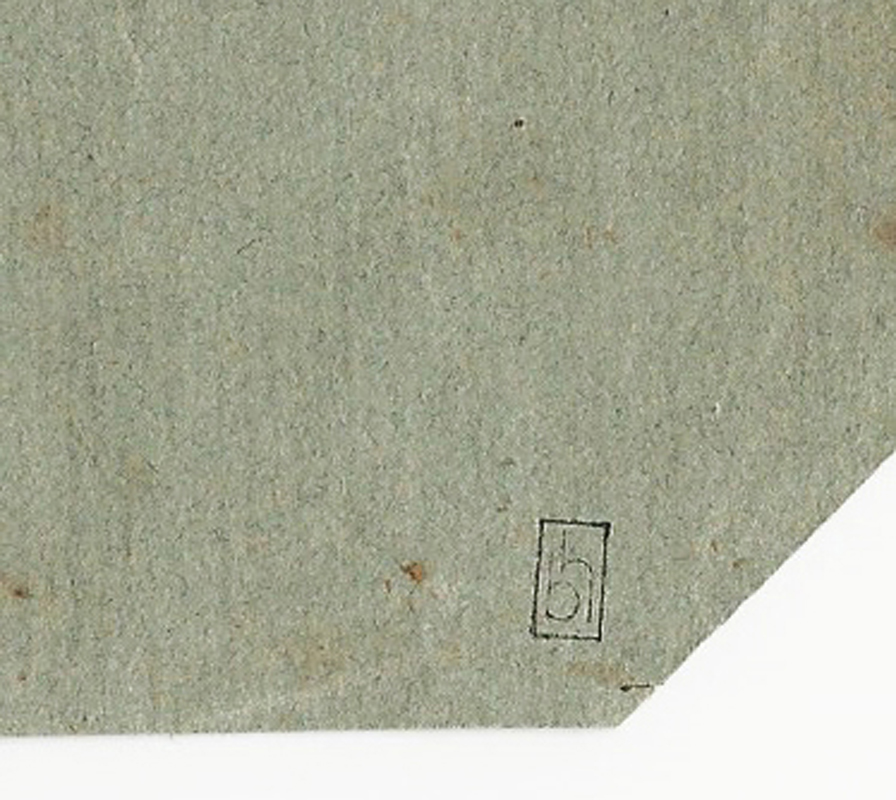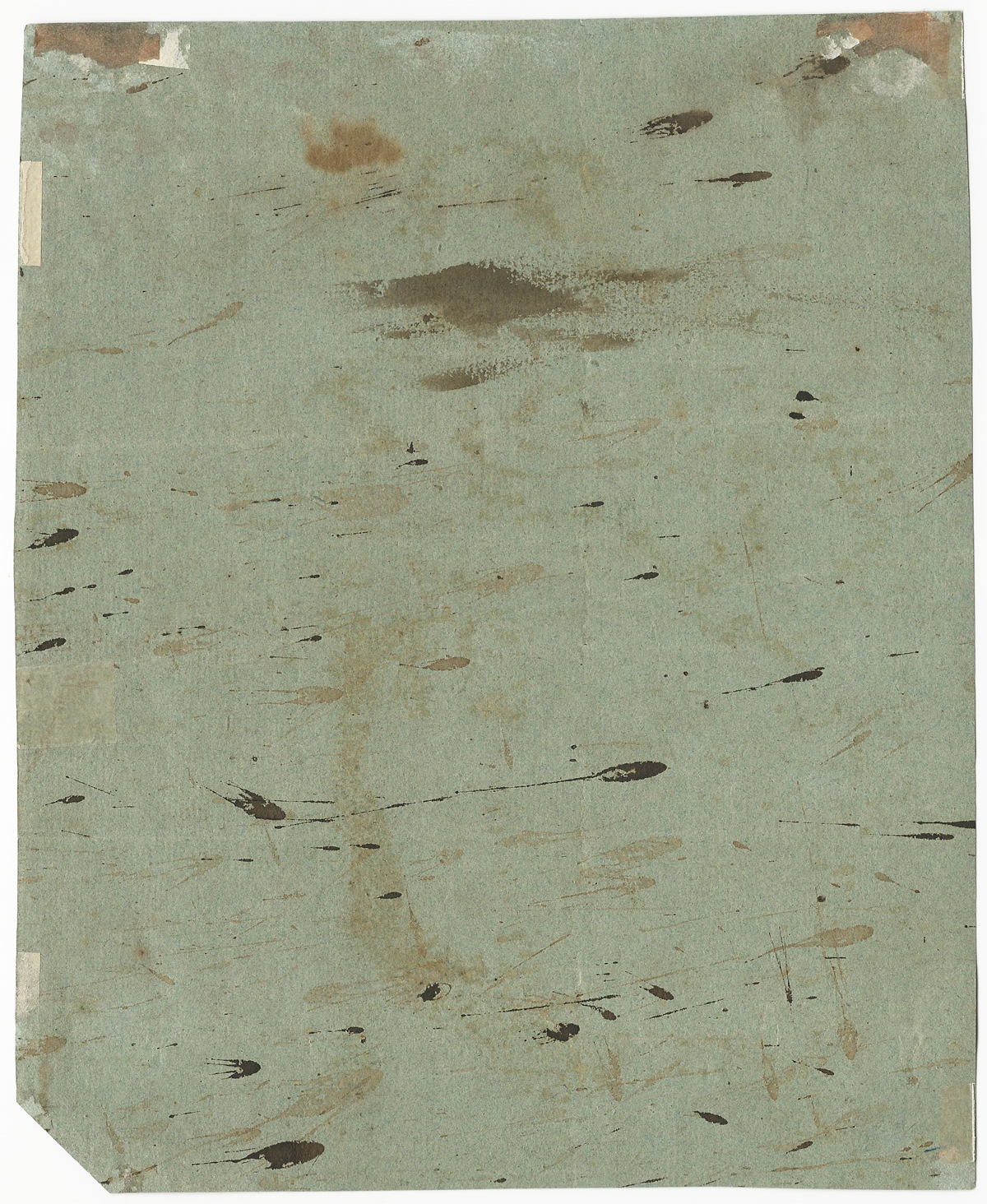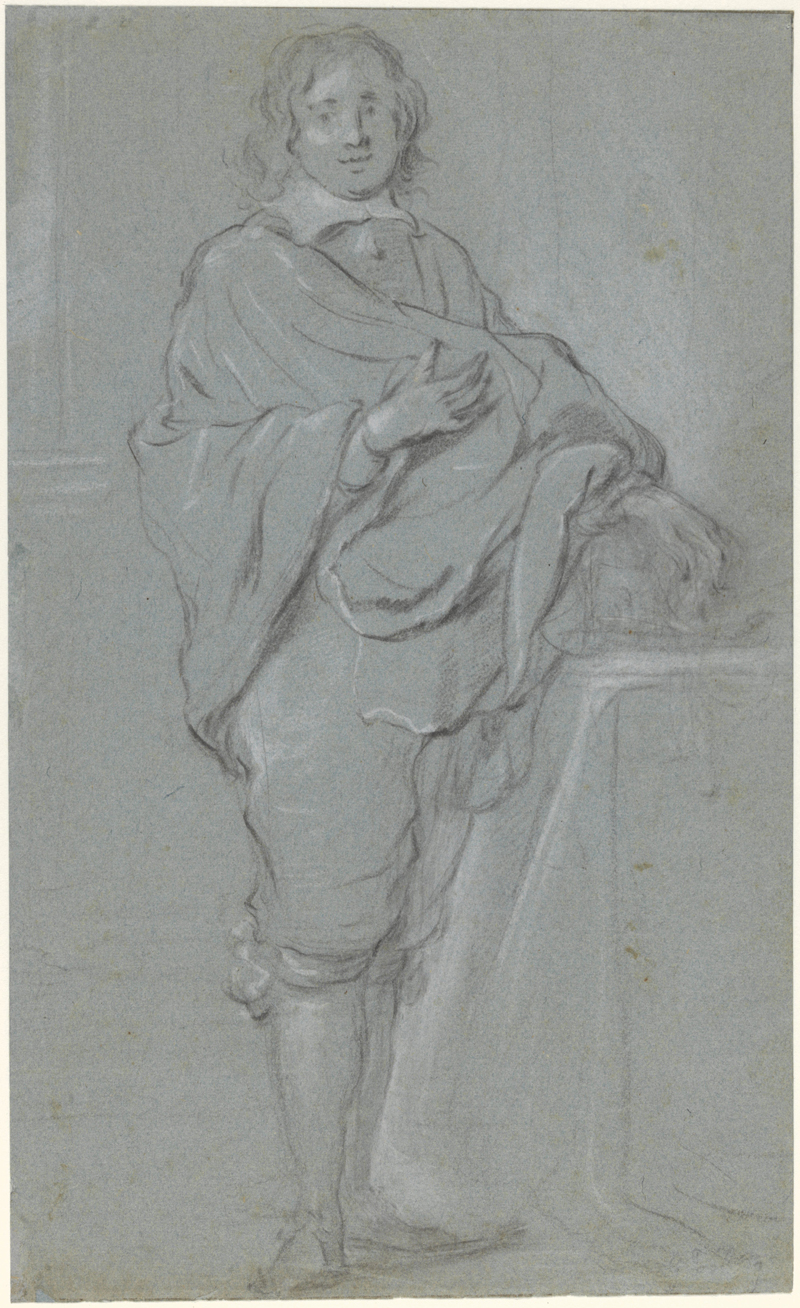GOVERT FLINCK (Cleves 1615 – 1660 Amsterdam)
Govert Flinck (Cleves 1615 – 1660 Amsterdam)
Study of a Seated Robed Young Man
Black and white chalk on blue-green paper, countermark PD, 256 x 208 mm (10.1 x 8.2 inch)
Provenance
Bernhard Himmelheber (1898–1966), Karlsruhe (Lugt 4035)
***
Govert Flinck apprenticed with Lambert Jacobsz. in Leeuwarden around 1630.1 In the early 1630s he moved to Amsterdam, accompanied by Jacob Adriaensz. Backer (1608/09–1651), a fellow pupil. There they both studied with Rembrandt, who proved highly influential on the development of both artists. After 1642 Rembrandt’s influence diminished and Flinck increasingly painted and drew in the more refined Flemish style pioneered by Rubens and Van Dyck, favoured by the elite. Flinck was especially successful as a portrait painter, but he also produced works with historical, allegorical and genre subjects. Because of his early death, his most significant commission, the cycle of paintings of the history of Batavia for Amsterdam’s Town Hall, was never completed.
Flinck was highly active as a draughtsman, as were many of Rembrandt’s pupils.2 The most celebrated of the approximately 120 drawings catalogued by Werner Sumowski is a group of around fifty figure studies executed in black and white chalk on blue paper, often faded to a greenish hue. This combination of media, which gives a particularly painterly effect, does not occur in Rembrandt’s own drawn oeuvre, but it is highly comparable to a group of figure drawings by Backer, Flinck’s juvenile companion.3 The style of the two artists is so closely related, especially in their drawings of female nudes, that it is frequently extremely difficult to separate them.4
The present attractive and powerful sheet is a valuable addition to this group. Flinck has recently been confirmed as the author of this work by Peter Schatborn, the leading authority in the field.5 Although Flinck’s figure studies were often produced in preparation for a painting, no corresponding figure is known from any of his extant works. It must have been drawn for a live model and is possible a study for a figure in a pastoral scene, or could also have been used as the figure of Daiphilo in a representation of P.C. Hooft’s play Daiphilo and Granida, or for Silvio from G.B. Guarini’s Il Paster fido.
Our study can for instance be compared to the study of a standing man, preserved in the Rijksprentenkabinet, Amsterdam (fig.).6 Based on stylistic comparison with other sheets, our drawing can be dated to around the mid-1640s.
SOLD
1. There is extensive literature on the artist, see for instance: J.W. von Moltke, Govaert Flinck, Amsterdam 1965, P. Jeroense, ‘Govaert Flinck (1615-1660) Eine Künstlerbiographie’, Niederdeutsche Beiträge zur Kunstgeschichte 63 (1997), pp. 73-112 and Eric Jan Sluijter, Rembrandt's rivals: history painting in Amsterdam 1630-1650, Amsterdam 2015, pp. 97-110.
2. For Flinck as a draughtsman, see: Werner Sumowski, Drawings of the Rembrandt School, New York 1980, vol. IV, pp. 1883-2166, nos. 861-983xx and Peter Schatborn, ‘The early, Rembrandtesque drawings of Govert Flinck’, Master Drawings, 48 (2010), pp. 4-38.
3. For Backer’s drawings, see Sumowski, op. cit., vol. I, pp. 16-193, nos. 1-86xx.
4. See for instance Peter van den Brink and Jaap van der Veen, Jacob Backer (1608/9–1651), exh. cat. Amsterdam (Rembrandthuis) and Aachen (Suermondt-Ludwig-Museum) 2008-09, pp. 69-82.
5. Email communication of 22 September 2016; Schatborn does however point out that for the drawings in this group it remains extremely difficult to distinguish between Flinck and Backer, but based on present knowledge believes it to be by Flinck.
6. Black and white chalk on blue paper, 392 x 240 mm; inv. no. RP-T-1975-84; Sumowski, op. cit., vol. IV, p. 1908, no. 873, repr.
